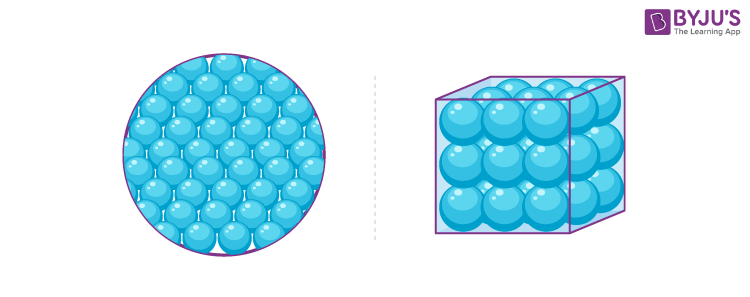Solid-state physics, a pivotal branch of condensed matter physics, explores the properties and behaviors of solid materials. It delves into the atomic-scale interactions that govern phenomena like electrical conductivity, magnetism, and structural integrity. For those curious minds eager to embark on a journey through this fascinating field, a comprehensive selection of literature serves as an excellent launching pad. Below, we present a curated list of quintessential texts that break down complex concepts into digestible insights.
1. Principles of Solid State Physics
This foundational text is a must-read for anyone stepping into the domain of solid-state physics. It elucidates core principles, offering readers an in-depth understanding of atomic structure, crystallography, and the electronic properties of solids. Through meticulous explanations and illustrations, readers will grasp vital concepts such as band theory and the electron properties of metals and semiconductors. With its methodical approach, this book lays the groundwork for more advanced studies.
2. Solid State Physics
Written by a renowned physicist, this book captures readers with its engaging narrative and clear exposition. It covers a range of topics from the basics of lattice vibrations to complex theories of magnetism. Each chapter builds upon the previous one, fostering a seamless understanding of solid-state phenomena. The author peppered the text with practical examples and problem sets, allowing readers to reinforce their understanding through application.
3. Condensed Matter Physics
Expanding on classical solid-state physics, this text delves deeper into modern developments that characterize the field today. It provides a thorough analysis of emergent materials like superconductors and nanomaterials. This book is tailored for those who wish to grasp not only the theoretical underpinnings but also the experimental techniques that underpin modern research. Readers will appreciate the thoughtful interdisciplinary approach, which connects solid-state physics to chemistry, materials science, and nanotechnology.
4. Introduction to Solid State Physics
This introductory text serves as a gentle entry point for novices and seasoned physicists alike. It strikes a balance between technical detail and accessibility, making it suitable for classroom settings and self-study. The book covers essential topics, ranging from crystal structures to electronic properties. With a pedagogical focus, it employs numerous diagrams and illustrations to elucidate complex topics, effectively catering to visual learners.
5. Quantum Theory of Solids
For those interested in the quantum mechanical aspects of solid-state physics, this book offers an intricate analysis of the subject. It navigates the reader through concepts like quasiparticles, phonons, and electron-phonon interactions, illustrating the symbiotic relationship between quantum mechanics and solid-state materials. This text features advanced mathematical derivations, appealing to readers seeking a thorough theoretical understanding.
6. Solid State Physics: An Introduction
This textbook is structured to guide beginners in grasping the core ideas of solid-state physics. It emphasizes a clear understanding of macroscopic materials, electrical properties, and response functions. The reader is introduced to key experiments and technologies that have defined modern solid-state research, such as X-ray diffraction and scanning tunneling microscopy. Supplemented with problem sets and real-world applications, it equips readers to engage with the field actively.
7. The Physics and Chemistry of Solids
This interdisciplinary work melds the principles of physics and chemistry to explore the intricate nature of solid materials. The text addresses how atomic and molecular structures influence macroscopic properties, thereby broadening the reader’s perspective. Topics like defects in solids and phase transitions are examined in detail, making this book ideal for scholars who appreciate a multifaceted approach to material phenomena.
8. Solid State Physics: A Novel Approach
With innovative insights and methodologies, this book presents a contemporary perspective on traditional themes in solid-state physics. The author employs modern computational methods and simulations to dissect the behaviors of solid materials, rendering abstract concepts tangible. This text is particularly beneficial for experimentalists seeking to understand the theoretical background behind their work or those keen on exploring computational material science.
9. Magnetism in Solids
This specialized book zeroes in on the magnetic properties of materials, providing readers with an intricate understanding of ferromagnetism, antiferromagnetism, and superconductivity. The author weaves theoretical frameworks with experimental data, offering a holistic view of the subject matter. The analysis of magnetic interactions at the atomic level is particularly compelling, appealing to advanced students and researchers alike.
10. Nanostructures and Nanomaterials: Synthesis, Properties, and Applications
In an era defined by nanotechnology, this book delves into the properties of materials at the nanoscale. It discusses the synthesis and characterization of nanostructured materials and their unique electrical, optical, and magnetic properties. By bridging the gap between solid-state physics and practical applications, it illuminates the role of nanomaterials in emerging technologies. This text engages readers aiming to explore cutting-edge developments and future prospects in material science.
In conclusion, solid-state physics emerges as a rich and dynamic field, with an extensive body of literature catering to diverse interests and expertise levels. Each recommended book offers unique insights into core principles, contemporary research, and the implications of solid-state phenomena in technology. Whether one is simply curious or aspiring to a professional career in physics, these texts will furnish them with the requisite knowledge to navigate this captivating realm of science. The journey through solid-state physics offers not only intellectual enrichment but also an understanding of the fundamental principles that shape the materials fundamental to modern life.








